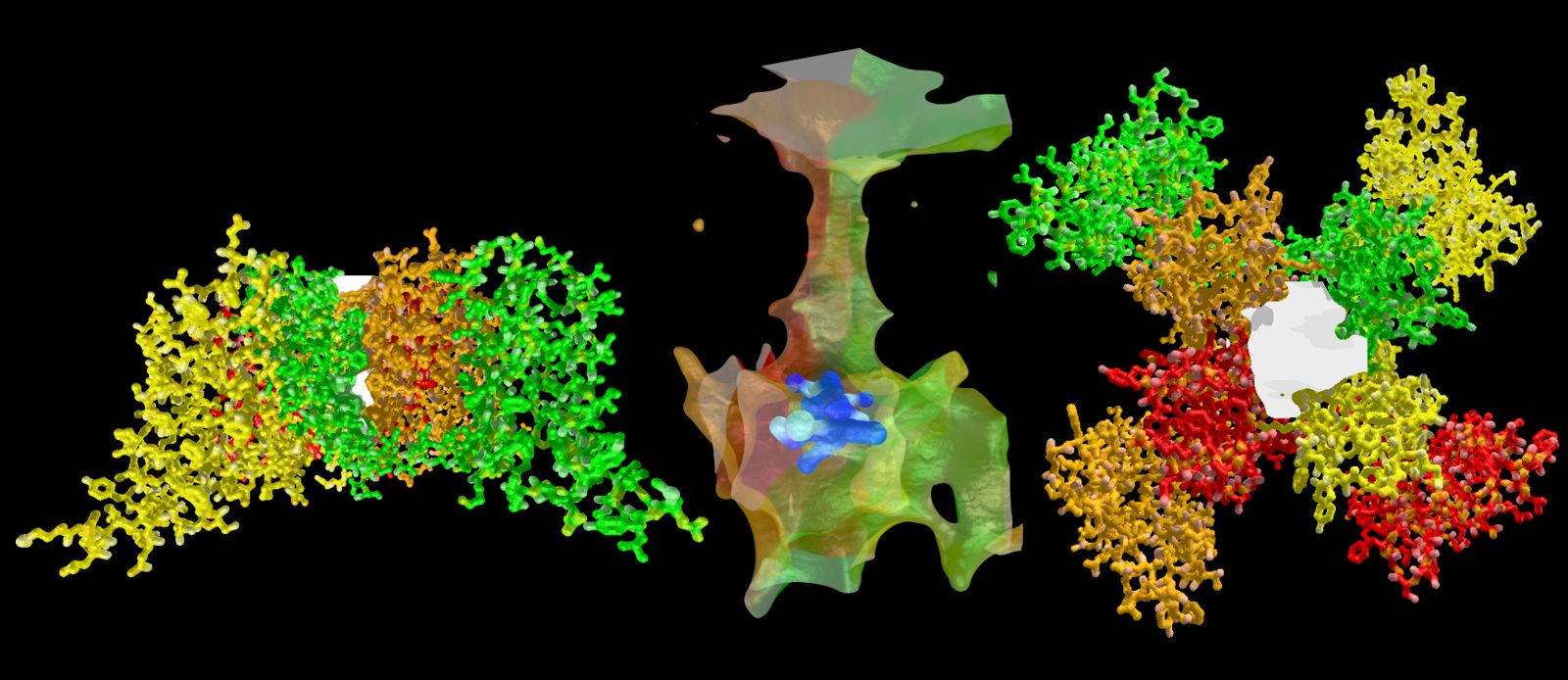
Ca2+ channels and their inhibitors
Voltage-gated Ca2+ channels are important in initiating contraction of muscle cells. A reduction of their activity decreases blood pressure by decreasing contraction of blood vessel smooth muscle cells. Similarly, arrhythmic contractions of the heart muscle are treated by blocking Ca2+ channels. Different compounds are used for treating high blood pressure (1,4-dihydropyridines) and arrhythmias (phenylalkylamines, benzothiazepines) and it has been suggested that these compounds bind at different sites of Ca2+ channels. Crystallographic analysis of wild type and mutated Ca2+ channels by scientists from Great Britain and the US now defined precise binding sites and modes of action for the various compounds.
For their studies scientists used a bacterial homotetrameric model channel. Br-verapamil, representing phenylalkylamines, bound within the channel pore on the cytoplasmic side of the selectivity filter, this way blocking the pore (see figure). Compounds representing dihydropyridines, on the other hand, bound to an external surface of the channel exposed to membrane lipids. This resulted in allosteric changes in channel conformation, blocking the central pore.
The figure above shows binding of Br-verapamil to the homotetrameric bacterial channel. Br-verapamil is given in blue colour.
Source: Tang et al., Nature 537, 117 – 122